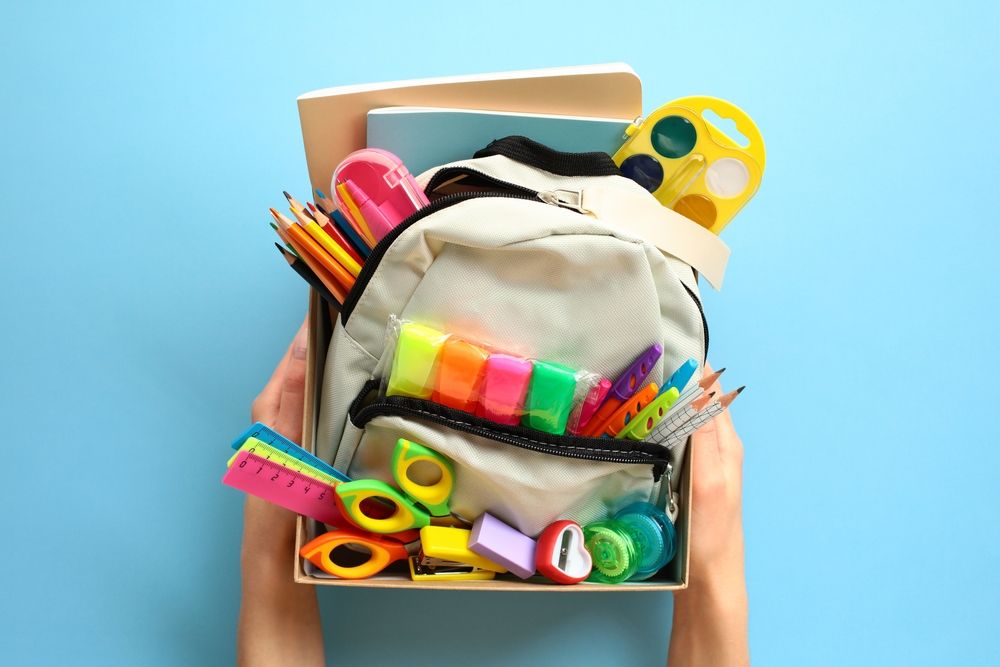Each new school year brings fresh excitement—new teachers, new opportunities, and of course, that long shopping list of supplies. But those lists add up fast. Between notebooks, binders, backpacks, electronics, and classroom fees, families can easily spend hundreds of dollars getting their kids ready for school.
The good news is you don’t have to break the bank to set your children up for success. With a little planning and some clever shopping habits, you can keep your school supply spending under control. Here’s how to save money on school supplies while still ensuring your kids have everything they need.
Take Inventory Before You Shop
Before you even think about hitting the stores or browsing online sales, go through what you already have.
-
Check last year’s backpacks, pencil cases, and bins around the house for leftover supplies.
-
You’ll be surprised how many pens, markers, folders, or partially used notebooks you still have.
-
Test pens and highlighters to see if they still work.
Reusing supplies you already own is the easiest way to slash your school shopping bill.
Stick to the School’s Required List
It’s tempting to grab every cute notebook and novelty pencil on display, but these extras add up quickly.
-
Only buy what’s on your child’s official supply list.
-
Avoid duplicates or “just in case” items unless you know they’ll definitely be used.
Once school starts, teachers will let you know if anything additional is needed—no need to overspend on guesswork.
Set a Budget and Shop With Cash
Give yourself a clear spending limit based on your needs and family budget.
-
Using cash for school supplies helps keep spending tangible—once the cash is gone, shopping is done.
-
This also teaches kids important lessons about budgeting and prioritizing needs vs. wants.
If you’re shopping online, try loading a prepaid card with your budget amount to avoid going over.
Shop Sales Early—and Late
The best deals on school supplies often come in two waves:
-
Early: Retailers start back-to-school sales in mid-summer, especially for big items like backpacks and lunch boxes.
-
Late: As the school year gets underway, stores deeply discount leftover inventory to clear it out.
If you can, buy core items early when selection is best, and stock up on extras like notebooks and folders after the rush when they’re on clearance.
Use Coupons and Cashback Apps
Maximize every dollar by stacking savings.
-
Look for coupons in store apps, mailers, and online. Many stores allow you to combine manufacturer and store coupons.
-
Use cashback apps like Ibotta or Rakuten for online orders to earn a percentage back.
-
Some credit cards offer extra cashback on back-to-school shopping categories.
Every small discount helps your overall total.
Buy in Bulk and Split With Other Families
Items like pencils, glue sticks, and notebooks are often cheaper in larger packs.
-
Buy bulk quantities at warehouse stores or during big-box back-to-school sales.
-
Split the cost and divide supplies with friends or family members who also have school-aged kids.
This way, everyone saves without ending up with five years’ worth of crayons.
Consider Generic or Store Brands
Many kids’ school supplies don’t need to be brand-name to get the job done.
-
Store-brand binders, markers, and notebooks are typically just as durable for half the price.
-
Compare ingredients or features on items like glue or colored pencils—often they’re nearly identical.
If your child really wants a character backpack or pencil box, compromise by buying store-brand basics and splurging on one special item.
Buy Quality Where It Counts
Some supplies are worth investing a little more in up front.
-
A well-made backpack or sturdy lunch box can last several school years, saving you from replacing them annually.
-
The same goes for a good pair of school shoes or a reliable calculator.
By spending smart on items that get heavy daily use, you avoid paying for cheap replacements later.
Reuse and Refresh Last Year’s Gear
A quick clean can make old supplies feel new again.
-
Toss backpacks and lunch boxes in the wash, or wipe them down with soapy water.
-
Remove last year’s stickers and add a new keychain or patch to personalize.
-
Refill pencil cases with leftover supplies or sharpen old pencils.
Kids often just want their stuff to look fresh, not necessarily brand new.
Get Creative With Labels and Organizing
Instead of pricey designer labels or custom folders, use budget-friendly ways to keep things organized.
-
Buy plain folders and let your child decorate with stickers or markers.
-
Use washi tape or inexpensive label makers to personalize notebooks.
-
This lets kids show their personality while keeping costs low.
Simple personal touches often mean more to kids than expensive gear.
Shop Tax-Free Holidays If Available
Many states offer tax-free weekends before school starts, where you pay no sales tax on clothing, shoes, and school supplies.
-
Check your state’s tax department website for dates and qualifying items.
-
Plan your main shopping trip around these weekends for extra savings.
If you’re buying bigger-ticket items like laptops or graphing calculators, this can save quite a bit.
Look Into Community Resources
If money is tight, don’t be afraid to reach out. Many schools, local nonprofits, and churches run back-to-school drives to help families with supplies.
-
Some offer free supply kits or backpacks.
-
Schools often keep a closet of extras for kids who show up without certain items.
It’s better to ask than to strain your budget or send your child to school unprepared.
Back-to-school shopping doesn’t have to empty your wallet. With a little planning, smart shopping, and a willingness to reuse what you already have, you can cover all your kids’ needs without financial stress.
Most importantly, remember that the start of the school year is about learning, growth, and excitement. Fancy supplies are fun, but your support and encouragement mean far more to your child’s success than the brand on their backpack. By spending wisely, you’re setting a great example—and keeping more money available for the things that truly matter down the road.


